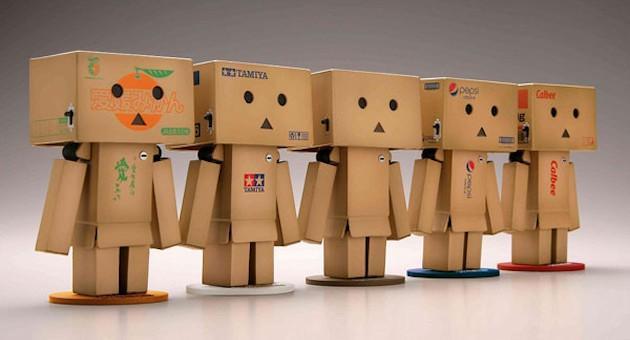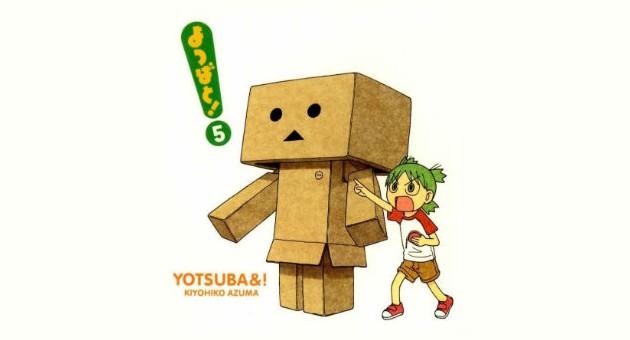On the internet, Danbo (not to be confused with Danish cheese) is more than just a corrugated cardboard character; it is a lovable Japanese cardboard robot to which many sites are dedicated. But where did it all start, and how did it become such a popular internet icon?
Danboru
Danbo (ダンボー): a short word for “danboru.” Translated from Japanese, danboru means corrugated cardboard.
Danbo, the cardboard robot (also known as Danboard, Danboru, Danbooru, and Cardbo) first appeared in the manga comic series Yotsuba&! by Kiyohiko Azuma, in Vol. 5 Chapter 28, April 2006 and wasn’t intended to be a recurring character at the time.
Yotsuba’s next-door neighbour, a girl named Miura Hayasaka, designs and gears up in the cardboard costume as part of a school science project. When Yotsuba sees the costume for the first time, she is truly convinced that it is real and asks the robot its name. Miura, not wishing to ruin her friend’s enthusiasm, responds with the name Danbo, a play on the Japanese word for corrugated cardboard, danboru. Muira further stated that Danbo was a real-life attack robot powered by money added to the slot on the chest. Yotsuba believes that the robot is real, and Ena, Miura’s friend, refuses to let her crush Yotsuba’s dreams by telling her the truth.
Note: The original English translation used the name Cardbo, which Yen Press later republished to use Danbo instead, as the editor at the time said it was “cuter”.
Danbo, The Cardboard Robot Popularity

At the time, Danbo the cardboard robot was relatively unknown, recognisable only to those who had been following the comics. As with other Japanese mangas, characters are often reproduced as toys and models. In late 2007, Japanese toy manufacturer Kaiyodo released their first figures as part of the Revoltech line of products to feature movable limbs, some of which included interchangeable Muira/Danbo heads. In later years, the figures were manufactured in several variants (and sizes) using different ‘boxes’, including the popular amazon.co.jp, Pepsi, and 7-Eleven.
On Social Media

In 2009, Flickr users began uploading photos taken with their Danbo figures, which were placed in everyday situations to resemble humanoid Danbo. The most famous of such photo shoots came in March 2009, when Arielle Nadel commenced her Flickr series 365 Days of Danbo, which was later compiled into a book titled 365 Days of Danboard.
Many more groups were founded with the Danbo tag, and many other sites from around the world comprise a few Danbo groups themselves. In just three short years, the Danbo Love Flickr group established in 2009 amassed over 3,300 members with 23,000 photo uploads. The character has also received much love on Facebook and Twitter in recent years.

Danbo is the alleged unofficial mascot for Japanese Amazon after the site recommissioned it. The figure remains a popular subject for many photographers and achieves strong sales internationally via Amazon and eBay. Its simplicity, easy-to-create poses, and innocent/sad-looking facial expressions are what made the cardboard robot such a popular subject for photos across the internet.







